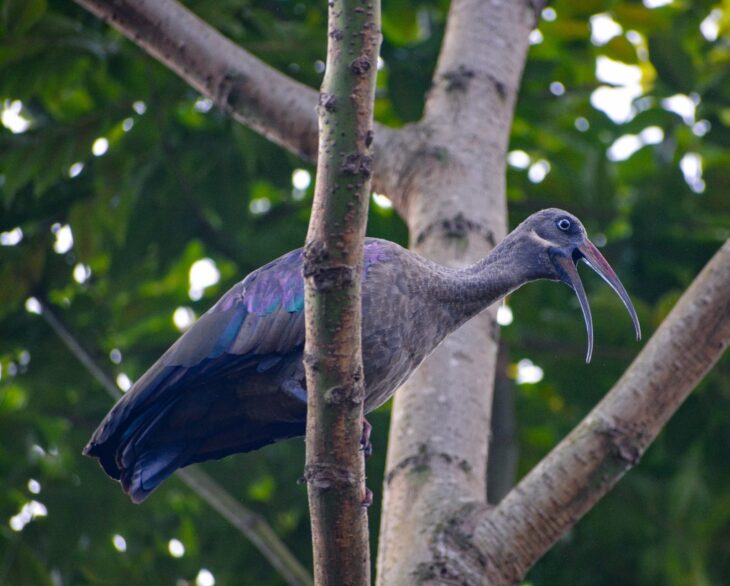KISII, Kenya, Oct 18 – As the years move by, have you ever wondered where the birds you used to see as a child disappeared to?
Some 30 years ago, birds such as crested cranes, sparrows, The tit, Hawks, parrots, weaverbirds, and insects such as crickets, butterflies, and the praying mantis were commonly seen in Kenya’s hinterlands.
Reduction and disappearance of biodiversity is a global crisis due to the ongoing climate changes; with the raising of temperatures due to global warming, forcing some animals to disappear to favourable ecosystems or go extinct.
Joel Ogutu from Nyanchwa location in Kisii says about 15 years ago they would predict weather seasons using sounds made by birds and insects or their movements.
These signs were used by everyone in this community to either prepare their lands for cultivation or harvesting season.
The 70-year-old Ogutu narrates that during the start of each rainy season, some insects such as crickets would show up in large numbers in the evening hours during the sun sets, and farmers would use this signal to predict the rainy seasons and prepare their land adequality.
Biodiversity is one of the areas majorly affected by climate change and this needs the quickest solution to reconnect a positive bridge between living organisms and their ecosystems.
“Crickets and butterflies would come out on grazing fields and they were so many jumping here and there, this was a sign that the rains were near,” says Ogutu.
Crested cranes could also appear to eat worms and some weeds after the planting seasons are over.
They were so many, that he used to spend much of his time chasing them.
Ibis birds were also common during the planting season to feed on worms in the soil and wasted grains that did not germinate.
“We also had plenty of weaverbirds, these birds would be seen mostly when food such as maize, wheat or bananas were ready for harvest, and eat them, they would send a message to farmers to harvest their produce,” says Ogutu.
At this point, farmers would use scarecrow stands in the middle and edges of their plots to bar these birds from eating the farm produce.
At the start of every dry season, thousands of blackbirds in a murmuration of starlings in one direction either from north to south or west to east to signify they were almost coming to an end.
During this time, people would harvest and store a lot of water, others would plant drought-resistant crops such as sorghum and sweet potatoes which would be used during this period
All these birds and insects enjoyed a friendly environment with moderate temperatures and a suitable ecosystem that favored them.
Biodiversity Loss
Ogutu says with climate change in place, all these birds and insects are nowhere to be seen.
“We no longer see these birds in our farms or flying high in the sky, I have never given it thoughts where these birds disappeared to,” says Ogutu.
Ogutu says for years now they don’t rely on signals from the birds to predict changes in weather patterns.

He says it’s rare to come across weaverbirds at this time but sometime back they would build nests even on the rooftops of their houses.
He says these birds left them with stories to tell generations to come how important they were in predicting weather seasons.
He noted the birds depended on the indigenous trees which acted as their habitat and since all these trees were cut down, all these birds and insects disappeared.
Consequences of Global Warming on the Ecosystem
Kisii County head of the meteorological department Henry Sese says these birds and insects went extinct due to changes in climatic conditions, especially the rise in temperatures.
Sese says the temperatures would be unconducive for those birds due to global warming. The temperatures would increase to high levels and this could not sustain those birds living in such habitats.
“These birds moved to areas where climatic conditions are suitable and conducive to them such as the rain forests,” says Sese.
Sese observed years back, mosquitoes were not used to inhabiting the Gusii highlands because of the cold temperatures, but due to the ongoing global warming, they have invaded the highlands in plenty.
Mosquitoes prefer habiting in warm places. They have moved from the lake basin in plenty and therefore there is a likelihood of an increase in Malaria in the region.
“Also, there are insects which were not habiting in Kisii years back such as the armyworms, they have moved to Kisii highlands because of the warm temperatures and destroying crops,” says Sese.
Solutions to reverse climate change
Sese advises residents of Kisii highlands to plant trees in plenty which will increase forest cover and consequently reduce carbon dioxide from the atmosphere as well as soil degradation. This will create a micro-climate of its own within a large climate.
“We advise our people to restore swampy areas by cutting down eucalyptus trees from swampy areas and replace them with indigenous trees which are environmentally friendly, and the biological diversity will find its way here,” says Sese.
He asked stakeholders to mainstream and create awareness of the importance of biodiversity and its benefits by creating sustainable and suitable habitats for biodiversity.
Josephine Moraa a resident in Kisii wants the government to introduce the climate change curriculum in schools to help learners have knowledge of the subject and find sustainable mitigation solutions.
“We want the education system to introduce climate change as a subject in the school curriculum. This will involve everyone in the climate change fight,” said Moraa.
During the 15th conference of the parties to the United Nations convention to combat desertification (COP15), scientists pushed for changes that will help improve the soil and ecosystem.
Head of Health research at the center for international Forestry Research and World Agroforestry (CIFOR-ICRAF) Leigh Winowiecki said land restoration by agroforestry will help stem biodiversity loss, slow global warming and reduce the risk scale of frequent disasters such as floods and zoonotic diseases.
Kisii County climate change action plan
In 2019, members of the Kisii County Assembly approved the County Action plan Bill which enforces the promotion and protection of the rights to a clean and healthy environment in accordance with ACT 42 of the constitution of Kenya.
The bill indicates the County Climate Action plan (CCAP) shall be for a period of five years and shall run concurrently with the National Climate Change Action Plan (NCCAP)
CCAP shall be aligned to the NCCAP and respond to the specific needs and circumstances of the County such as, containing climate change needs and response assessment to the county and guiding the county towards achieving low carbon climate resilient sustainable development.
Kenya’s National Development contributions (NDCs) in renewable energy
President Willian Ruto reaffirmed Kenya’s commitment to transitioning to 100 percent green energy by 2030 in responding to climate change.
Dr. Ruto said, it’s not too late to respond and tackle this threat of climate change and asked everyone to act urgently to keep global heating levels below 1.5 degrees Celsius to help those in need and end addiction to fossil fuels.
“Africa has the opportunity to lead the world, we have immense potential for renewable energy by reducing costs of renewable energy technologies and making this the most viable energy source,’ said Dr.Ruto.
The president noted Kenya is in transition to clean energy that will support jobs, local economies, and sustainable industrialization.
“We call our brothers and sisters to join as in this journey, we shall support a successful summit in Africa in November by championing the delivery of finance, and technology needed for Africa to adapt to climate and impact support those in need and manage the transition,’ said Ruto
The Kenyan government has already announced plans of moving the country into 100% green energy by 2030 to mitigate climate change by reducing the country’s carbon print by utilizing solar, wind, hydrogen power and bioenergy.
Currently, 73 percent of Kenyans have connected to electricity whose main source of supply is geothermal power generation which supplies low-emission energy for a green recovery in the future.
The government has set up a number of projects that will boost its target of a green energy nation by developing Africa’s largest single wind power facility in Lake Turkana. The government has also invested in the Olkaroia Geothermal power plant in Naivasha, Nakuru country.
Kenya is at 90 percent of renewable energy and is working towards the realization of full transition, collaborating with other nations to get support in achieving its goal of improving livelihoods by providing clean energy to its people.
Carbon emissions in Africa
During the UN conference (COP26), many of the most polluting countries promised to be zero carbon by 2070.
African countries contribute the smallest share of global greenhouse emissions at 3.4 percent while China has the highest emissions at 23 percent, followed by the USA at 19percent, while the European Union stands at 13 percent.
In 2021, South Africa was the most polluting Country which emitted about 452 million metric tons of Carbon dioxide (CO2), Egypt emitted about 213 million metric tons of CO2 while the Central African Republic, Comoros, and Gunia Bissau were the least in emitting CO2.
Want to send us a story? Contact Shahidi News Tel: +254115512797 (Mobile & WhatsApp)


